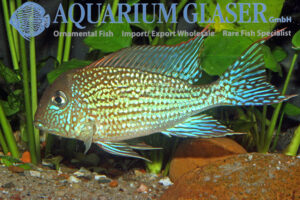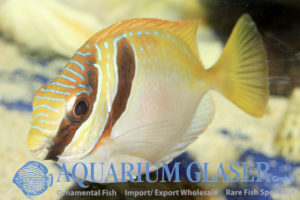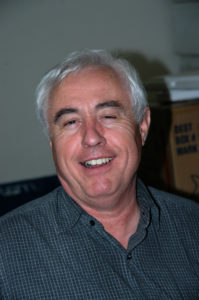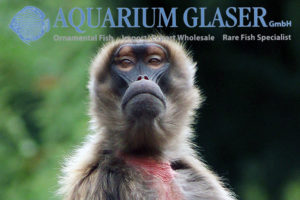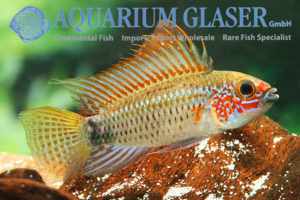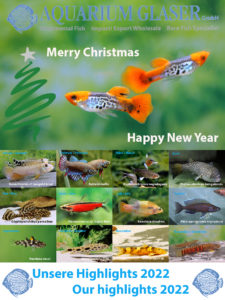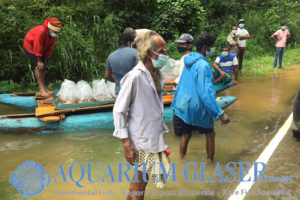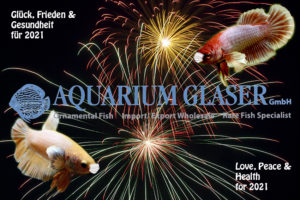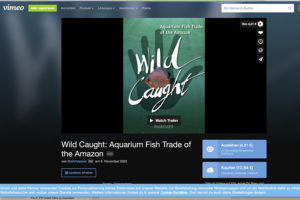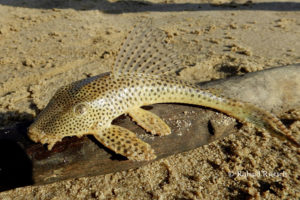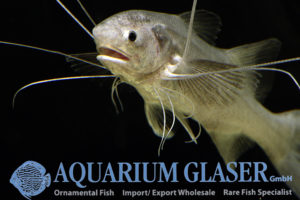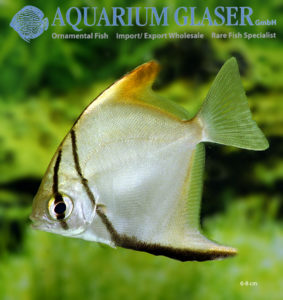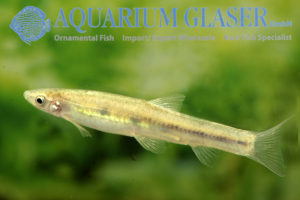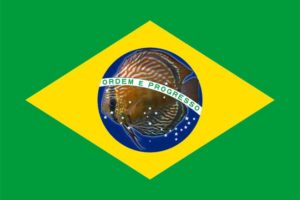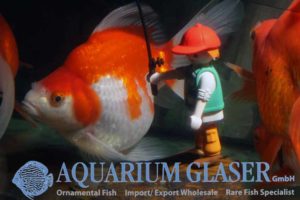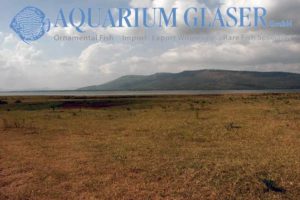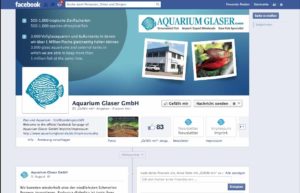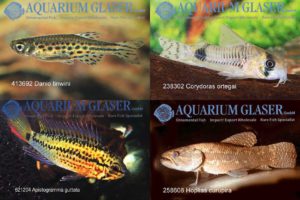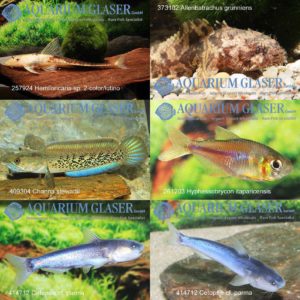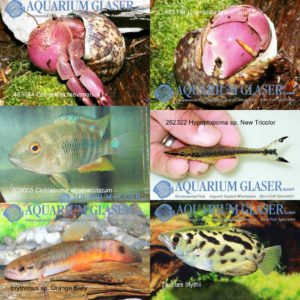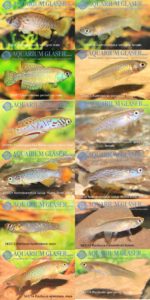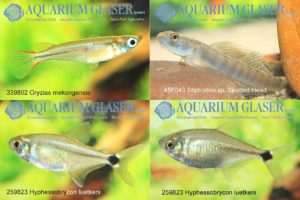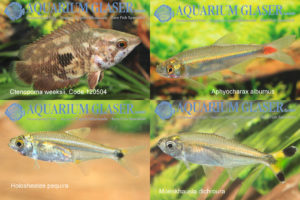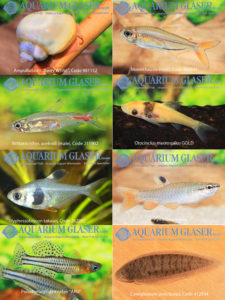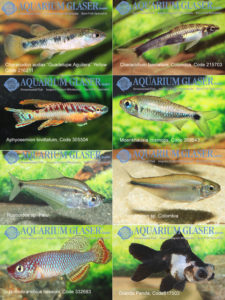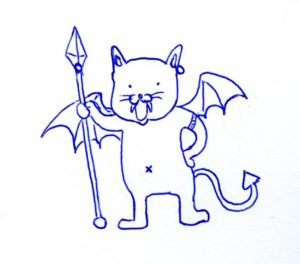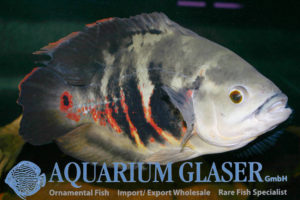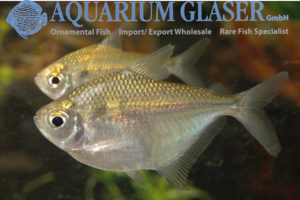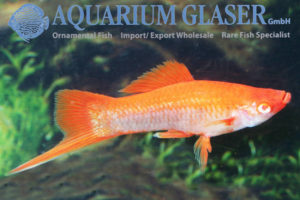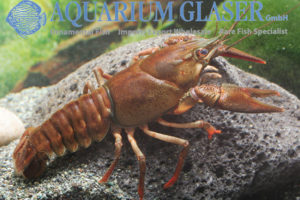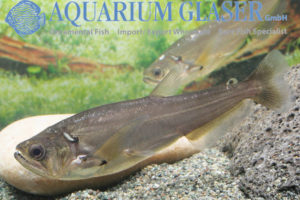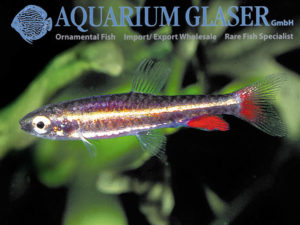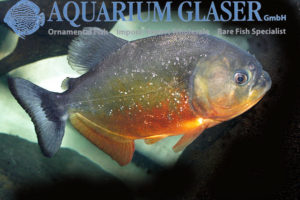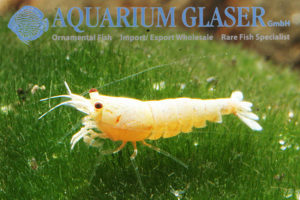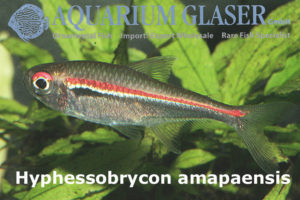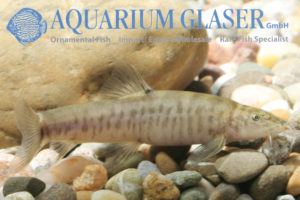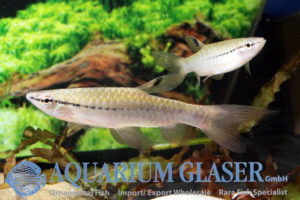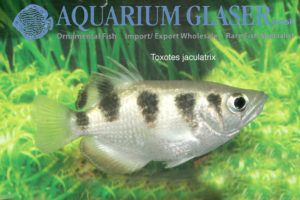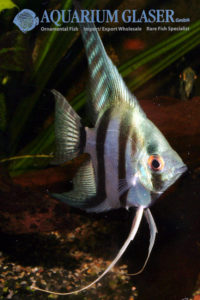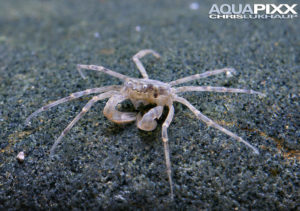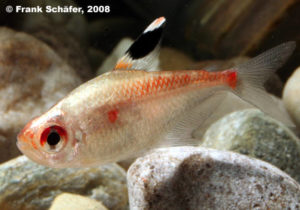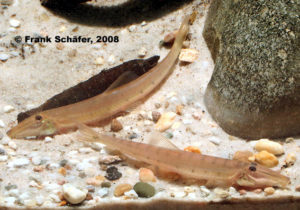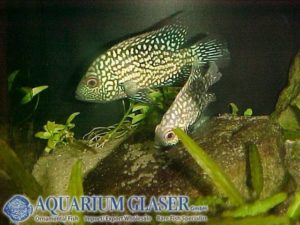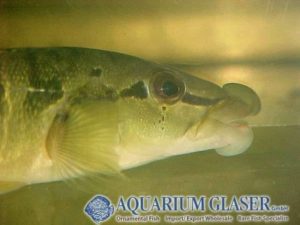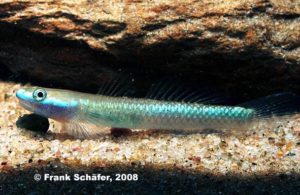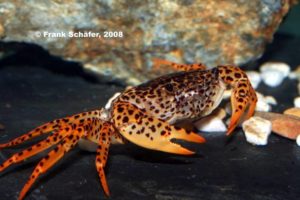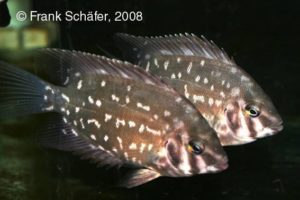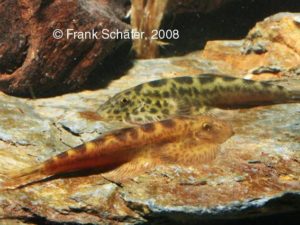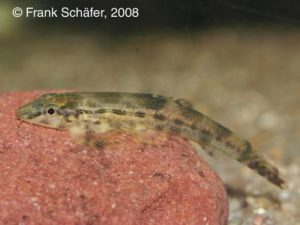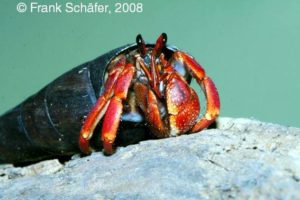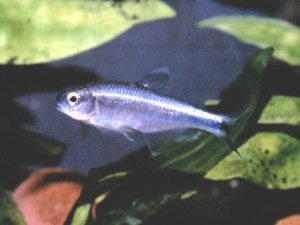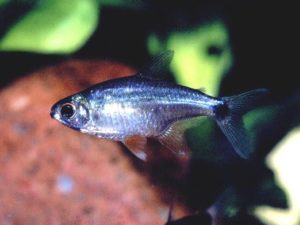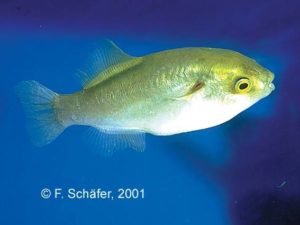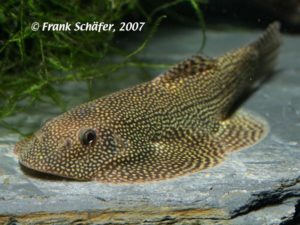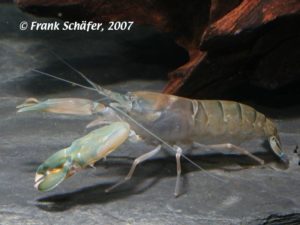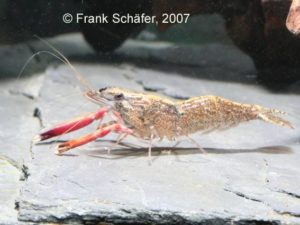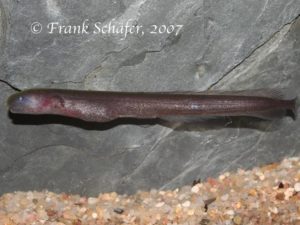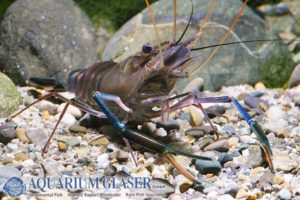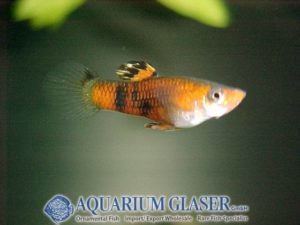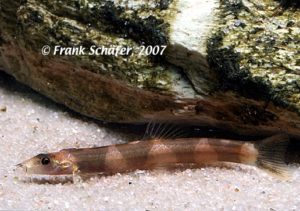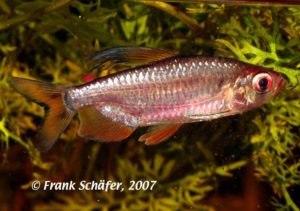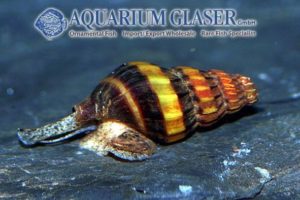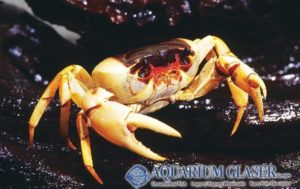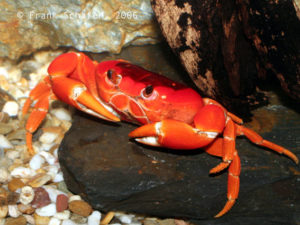Due to a misunderstanding, we inadvertently posted some wrong pictures last week. Instead of the Geophagus mirabilis described in the text, they were breeding specimens of G. sp. “Jatapu”, a scientifically undescribed species that we will soon be able to offer. Here are the correct pictures of fully grown Geophagus mirabilis. Our heartfelt thanks to […]
32. All the rest (79)
-
-
Freshwater rabbitfish
The rabbitfishes of the genus Siganus are well known to marine aquarists. They are beautiful animals that usually grow to 15-30 cm in length and eat mainly vegetable food. Until now no freshwater species of the genus was known, only Siganus vermicularis is regularly found as juvenile in the brackish water of river mouths. Now, […]
-
Temporarily closed
Dear fish friends, we are currently rebuilding something and therefore there will be no newsletters for a short time. We will hurry, we promise! Best regards The Aquarium Glaser team
-
Dieter Bork (1945 – 2023)
When the news reached us last Wednesday, 27.9.2023, that Dieter Bork had died, it was a shock. We had just met in the fish hall of Aquarium Glaser, he was as lively as ever, full of plans and ideas, anything but frail. It still seems inconceivable to me that he will never again tell us […]
-
Dear readers of the English newsletter,
unfortunately there is a problem on the part of our Internet provider which has not yet been solved: subscribers to the English-language newsletter receive the German version by mail. We are very sorry about this! However, you still have access to the English version. Please click on the button “READ MORE” in the newsletter you […]
-
Assessment with political explosive power:
ZZF publishes expert opinion on positive list Today, the ZZF published its commissioned “Expert Opinion on the Legal Admissibility of the Introduction of a National Positive List for Pets”. The expert opinion, prepared by Prof. Dr. Dr. Tade M. Spranger of the University of Bonn, unequivocally proves that a positive list for pets would be […]
-
Dear ornamental fish friends around the world,
an emotional and eventful year 2022 lies behind us. And the coming year 2023 certainly holds many challenges for all of us in view of the world political situation and the still raging pandemic. That’s why this Christmas, even more than usual, we hope that you and your loved ones will be able to find […]
-
The global ornamental fish trade in times of Corona
The ornamental fish industry, as an international, global player, is naturally particularly affected by the pandemic; however, it is not only the virus and its direct effects that are causing problems for breeders, catchers and exporters around the world. Climatic changes, industrial conversion of the landscape, water pollution and social aspects also have a major […]
-
A perfect start
and a happy, successful and healthy New Year 2021 wishes you the whole team of Aquarium Glaser
-
Complete documentation about the advantages of the wild caught ornamental fish in Amazonia now available
Again and again it is circulated that the wild caught of ornamental fish threatens species and the diversity of species, is predatory exploitation of nature. However, there are no scientific studies that would prove this. All scientifically founded, serious work on the topic proves the opposite: Wild caught of ornamental fish is a clean thing! […]
-
Colombia, a journey to the habitats of our fishes
Every aquarist probably wants to visit the habitat of his fish once. We were 6 aquarists from the Berlin area as well as from the south-southwest of Germany. Through Roman Neukirchen from the company Aquarium Glaser we got the opportunity to have a look at the transport routes from the catch of the fish in […]
-
Polynemus paradiseus
Currently we have a really unusual species of fish in our fishhouse: Polynemus paradiseus. The Polynemidae family is almost unknown to hobbyists, despite the fact that over the centuries 96 species have been described, 42 are still valid, and these fish are important food fishes in their home range. Two species of the genus Polynemus […]
-
Monodactylus kottelati
Monos are classics among the brackish water fishes. Much of the aquarium literature about them mentions that these fish can be adapted easily to freshwater. But – what should this be good for? Is it really that difficult to put some salt (10-20 g per litre) in water? If one keeps them in brackish water […]
-
Kneria stappersii
We can offer now for the first time a species of the strange genus Kneria (shellears) as German bred ones. Nobody will buy a shellear for the bright coloration. These fish become about 5 – 7.5 cm long (depending on the species). They have a number of peculiarities that make them extremely interesting from a […]
-
Semifinal! Brazil vs. Germany
vs. Is it possible to compare discus with guppys? Hardly! Both are wonderful fish, but completely different. A discus, more sailing than swimming through the tank, is fascinating to look at even for non-aquarists, but it is also almost impossible not be excited by the brilliant guppys. So one can say: whoever wins the semifinal […]
-
Our new employee Friedolin
Dear reader, we are glad to introduce to you our ew employee: Friedolin. Friedolin is a professional fisherman and originates from the house of Playmobil. Any time really large fish come into play, it is Friedolin´s part to face the truth. He is a real brave guy and helps you, dear reader, to realize how […]
-
Drought in Singapore and Malaysia
Currently about 80% of the freshwater ornamental fish traded worldwide are bred specimens. A larger part of them is bred in Malaysia and Singapore. The drought there is extreme, February 2014 was the driest February in the region since 1869! This affects strongly the breeder´s facilities. One of our suppliers wrote: “The weather issue has […]
-
Aquarium Glaser on Facebook
Dear reader, from now on Aquarium Glaser is also available on Facebook: www.facebook.com/aquariumglaser Come and join us there. Have fun! Your Aquarium Glaser Team
-
New in stock calendar week 7, 2011
Dear customers, our weekly importations regularly content species and varieties we never or only very occassionally had in stock. Thus they are – at least for us – new. Sadly it is for different reasons not possible to portray all of them in detail. However, we want to show you at least some of the […]
-
New in stock calendar week 6, 2011
Dear customers, our weekly importations regularly content species and varieties we never or only very occassionally had in stock. Thus they are – at least for us – new. Sadly it is for different reasons not possible to portray all of them in detail. However, we want to show you at least some of the […]
-
New in stock calendar week 5, 2011
Dear customers, our weekly importations regularly content species and varieties we never or only very occassionally had in stock. Thus they are – at least for us – new. Sadly it is for different reasons not possible to portray all of them in detail. However, we want to show you at least some of the […]
-
New in stock calendar week 4, 2011
Dear customers, our weekly importatios regularly content species and varieties we never or only very occassionally had in stock. Thus they are – at least for us – new. Sadly it is for different reasons not possible to portray all of them in detail. However, we want to show you at least some of the […]
-
New in stock calendar week 3, 2011
Dear customers, our weekly importatios regularly content species and varieties we never or only very occassionally had in stock. Thus they are – at least for us – new. Sadly it is for different reasons not possible to portray all of them in detail. However, we want to show you at least some of the […]
-
New in stock calendar week 2, 2011
Dear customers, our weekly importatios regularly content species and varieties we never or only very occassionally had in stock. Thus they are – at least for us – new. Sadly it is for different reasons not possible to portray all of them in detail. However, we want to show you at least some of the […]
-
New in stock calendar week 1, 2011
Dear customers, our weekly importatios regularly content species and varieties we never or only very occassionally had in stock. Thus they are – at least for us – new. Sadly it is for different reasons not possible to portray all of them in detail. However, we want to show you at least some of the […]
-
New in stock calendar week 52, 2010
Dear customers, our weekly importatios regularly content species and varieties we never or only very occassionally had in stock. Thus they are – at least for us – new. Sadly it is for different reasons not possible to portray all of them in detail. However, we want to show you at least some of the […]
-
Subscription of our newsletter works again
Dear visitor, sadly we became aware only now that for some days the link for subscription of our free newsletter did not work. We were able to solve the problem and apologize for all those who gave up frustrated. Sincerely yours, the team of Aquarium Glaser Picture: Fehlerteufelchen © by Hidenori Nakano, 2009
-
Astronotus sp. „Bahia Red“
Sadly it was not possible to research if this Astronotus really was collected in the Brazil state of Bahia. Currently no scientific reports of the occurence of the genus in Bahia are known. So we have to leave the question open, if this population was brought to Bahia as a food fish or if they […]
-
Brachychalcinus orbicularis
Brachychalcinus orbicularis is also known in the hobby under the name “Silver Dollar Tetra”, which might lead, however, to confusion with tetras of the genus Metynnis, which are also called “Silver Dollars”. Ephippicharax orbicularis is a well known synonym for our fish, which is quite popular in the hobby despite the fact that it displays […]
-
Xiphophorus hellerii Platin Orange
Xiphophorus hellerii Platin Orange: The latest sport in swordtails is this gorgeous variety. In swordtails exists an interesting gentic phenomenon. The gene for „albino“can be combined with body colours, if the body colours derive from a cross with platyfish. A real albino swordtail has red eyes and a whitish body. In the Platin Orange swordtail […]
-
Astacus astacus
The Noble or River cray, Astacus astacus, is sadly in danger of extinction in central Europe. The reason for this are the extreme destruction of the natural habitats in combination with the introduction of a Northamerican species between 1860 and 1870. This species, the so-called Camber cray (Orconectes limosus) was infested with a disease. This […]
-
Hydrolycus scomberoides
The Dogtooth characins (Hydrolycus) are small genus of tetras (four species) that have a wide distribution in tropical South America. They have in common very long saber-like teeth in the lower jaw. In the upper jaw cave-like notches are present, as otherwise the fish would not be able to close the mouth. These saber-teeth are […]
-
Nannostomus anduzei
For the first time ever we were able to import this tiny fish in larger numbers. Until now the fish was available only by accidental by-catches. Please read more about this new jewel for nano tanks: Within the family Lebiasinidae, sixteen scientifically accepted species of the genus Nannostomus are known. Still, in aquatic specialist shops […]
-
Geophagus dicrozoster and G. abalios
The beautiful eartheaters of the Geophagus-surinamensis relationship are among the most colorful cichlids, shining in all colours of the rainbow. There are numerous species and some of them even have colour varieties in different river systems. As these are currently not recognized by scientists, we help ourselves in adding the river´s name behind the scientific […]
-
Pygocentrus piraya
The „real“ piranha, Pygocentrus piraya, is restricted to the river system of the Sao Francisco in southern Brazil. It is a up to 30 cm long species, which is characterized by its deep red breast and the mighty jaws when it is fully grown.However, even juveniles display a very attractive coloration. Most piranha species belong […]
-
Neocaridina Red-Bee-Snow-White-Shrimp
Breeding of „Crystal Red“ shrimps has become a widespread hobby. These dwarf shrimps are real pets in the sense of domesticated animals, a very interesting fact under the aspect of culture history: this is the first case of a crustacean that has been cultivated for that reason since the rise of men on earth! A […]
-
Hyphessobrycon amapaensis
One of the most beautiful tetras of South America is availble now in brillantly colored wild collected specimens. The Amapa tetra is an uncomparable eye-catcher for any well suited community tank for South American fishes. As usual, among these wild collected fishes were also specimens of other species, so-called by-catches. This gives us a good […]
-
Schistura cf. jarutanini
The brook loaches of the genus Schistura are far spread over South and Southeast Asia. There are hundreds of species, most of them still scientifically undescribed. Almost each flowing water has it´s own species. So it is no surprise that some of the species also became cave-dwellers. We could import a small number of individuals […]
-
Pyrrhulina laeta
It is quite long ago that we were able to import this wonderful tetra. But now we can offer it again! Including the caudal fin the males can reach 12 cm in length. Males are generally larger than the females. A characteristical pattern for the species is the black line that extends to the level […]
-
Toxotes jaculatrix
Seven species of Archerfishes (Toxotes) are known. Three of them (T. lorentzi and T. kimberleyensis from Australia and T. microlepis from South East Asia) are usually found in fresh water. Two are practically unknown, at least they have not been kept in aquaria so far: T. blythi from Burma and T. oligolepis from the Moluccas. […]
-
Pterophyllum scalare Blue Dwarf
In 1949 Werner Ladiges mentions a blue dwarf angel (Pterophyllum scalare) that appeared by chance (problably by mutation) in a large breeding stock before WW2. Beside its unique blue coloration a characteristicly feature of these fishes was their small adult size. They never grew bigger than 5 cm body height. Although this stock survived WW2 […]
-
Limnopilos naiyanetri
Described in 1991, Limnopilos naiyanetri Chaung & Ng, has only just been discovered by the hobby. Crabs are found in pure freshwater in the roots of floating vegetation, ie. water hyacinth (Eichornia crassipes) and fine-leaved aquatic plants along the riparian zone (river banks). They have hairy bodies and appendages which collect mud and dirt and […]
-
Hyphessobrycon pyrrhonotus Gold
(Nov.10th 2008) The so called „gold dust disease“ of the bloodfins is a very interesting phenomenon, which happens to very many bloodfin species. The best known one surely is the gold-tetra, Hemigrammus rodwayi whose number of gold-dust-sick animals in nature is higher than of the normal coloured ones. The gold-dust-sick animals were even considered as […]
-
Acantopsis sp.
(Nov.6th 2008)Due to its unusual head shape the horseface loach A. coirorhynchos is one of the most popular aquarium fish. In nature they often are residents of clear rivers, where you can find them especially on sandy grounds. Inside the aquarium you also have to provide sandy ground, which allows them to completely bury themselves. […]
-
Herichthys sp. BLUE-GALAXY
(Aug.6th 2008) A brand new star is born: Herichthys sp. Blue-Galaxy. We are proud to be able to supply limited numbers of this this beautiful breeding form for the first time. They are pubescent in a size of 6-8cm, which they have successfully demonstrated in a tank in our office. Since they should not get […]
-
Impressions of our shipment from Argentinia on July 29th 2008
-
Stiphodon semoni
(23.Aug.2008) From Indonesia we received this beautiful neon-blue goby. Stiphodon semoni grows up to 4-5cm and was several times imported under the wrong name Sthiphodon elegans. Its habitats are fast floating hillstreams with rocky ground. It is found in Indonesia, the Philippines, New Guniea and the Solomon Islands. The nourishment for this item is easy: […]
-
Parathelphusa pantherina
(21.Mai 2008) Last week we received from the Matano Lake in Indonesia a very beautiful crab: the panthercrab. Since they live nearly totally under water, they need only a small terrestrial part in their tank. A hard water with a temperature from 25-29°C is favored. They can be easily fed with all kind of foods; […]
-
Uaru fernandezyepezi
(9.April 2008)For the first time we can offer some offspring of Uaru fernandezyepezi. The home of this extremely rare cichlid is in the border area of Colombia and Venezuela, where they occur in the area of the Rio Atabapo. From there origin some challenging fishes such the Altum-Angels. Their requirements are similar, the water hardness […]
-
Sinogastromyzon wui
(18. Feb.2008) Last week we received this loach which was described by FANG 1930. Their habitat is from the Nanpan-jiang and Xi-jiang basins in Guangdong to Guanxi provinces in China. The maximum size is about 8-10cm. They should be kept in cold water, not over 22-23°C, and they have very high oxygen requirements. To offer […]
-
Homaloptera tweediei
(14.Feb.2008) The adult size of the gecko-loach, Homaloptera tweediei, is only approx. 4cm. This species is very interesting for the hobbyists, because they can be kept for a longer period in a water temperature of more than 24°C. The main reason is the origin in central Thailand. After acclimatisation they are very thankful and easy […]
-
Coenobita cf.pseudorugosus
(11.Feb.2008) Again a new “crawler”: Coenobita cf.pseudorugosus. From Asia we received this super red hermit crab. The conditions to keep them are similar to all other land hermit crabs. Noteworthy are the nice flats they carry: from screwdriver snails of 5-6cm which the hermit quit the leasing contract…because of own requirement….(Photo F.Schäfer, Text R.Neunkirchen)
-
Bryconamericus/Hemibrycon sp.
(16.Jan.2008) These beautiful, agile, steel-blue shining tetra, which grow up to approx. 6cm were caught by Hoffmann & Hoffmann in a clearwater stream in Peru nearby the Andes in 2004. Six animals reached Germany and could be bred. They do not need much warmth, 24°C are sufficient. The youngsters grow slowly. An exact classification was […]
-
Cheirodon sp. (A)
(16.Jan.2008) The most colourful type of the three different Cheirodon/Odontostilbe species caught by Hoffmann & Hoffmann in Peru in 2004, which cannot be classified exactly is Cheirodon sp. (A). The animals have red coloured belly- and anal fins, males more intense than females. Also these fish were already often bred. They are productive and fast-growing.(Photo […]
-
Auriglobus silus
(21.Dec.2007) Streched Puffer is his name. This week we recieved this frisky puffer from Thailand. They are easy to keep and do not need special water parameters. In bigger sizes they can tend to fight between themselves. All in all it is an interesting puffer, which will be kept mainly from experts or experienced hobbyists. […]
-
Sewellia sp. Spotted
(19.Dec.2007) This, very attractive, probably scientifically not described hillstream sucker reached us from Vietnam. They remember on Sewellia lineolata but their point pattern is finer and also is the for S. lineolata characteristic “stripe” missing. Like all hillstream suckers they come from fast flowing water, there they inhabit rapid flowing streams where they graze on […]
-
Alpheus cyanoteles
(17.Dec.2007) Pistolshrimp…that`s what they are called. Currently we have a very limited number in stock. Generally this is a brackish item, which is totally adapted to live in freshwater. They come from the peninsula of Malaysia. They can create a sound like the shoot of a pistol, which is why they are called Pistolshrimp. You […]
-
Macrobrachium sp.RED CLAW
This amazing shrimp arrived last week: Macrobrachium sp.RED CLAW. We received a very limited number of this item, which is coming from east Borneo. Our supplier told us that he never shipped them to Europe before. This picture is showing a male, if you click on the small blue fish next to the picture, you […]
-
Isichthys henryi
(29.Nov.2007) Currently in stock: one of the rarest Mormyrids in the world: Isichthys henryi. Our supplier from Guinea informed us that this item appear only 2-4weeks per year! So it only can be called luck to have nearly one hundret pieces right now in stock! To keep the single is recommended, because they are agressive […]
-
Caridina cf. propinqua
30.Nov.2007) Now we are happy to have them available in big numbers : the mandarinshrimp, Caridina cf. propinqua. Yesterday we received a good quantity of this beautiful shrimp from our supplier . Their origin is the isle of Sulawesi. So far we can say are they easy to keep; the females grow up to 2cm […]
-
Macrobrachium rosenbergii
(26.Nov.2007)The genus Macrobrachium rosenbergii is playing a very important role in the Aquaculture in many regions of asia. Mainly in Thailand they are bred in huge numbers for human consumption. This shrimp belongs to the family Palaemonidae and from time to time they are mported to Europe. But when you find this very nice shrimp […]
-
Micropoecilia picta RED
(15.Jan.2008) FINALLY in good quantities available: MICROPOECILIA PICTA RED. From now we will have this beautiful fish on a regular base in stock. We get it from our breeder by pair. A much better availability is now guaranteed. (Photo & Text R. Neunkirchen)
-
Schistura pridii
(19.Oct.2007) Last week we received another new item: Schistura pridii. This beautiful small loach (grows up to 4.5cm) comes from Thailand. Exactly they were found in the upper Chao Praya Bassin in the Chiangmai province in the north of Thailand. They come from cool (18-24°C) & fast floating rivers, containing hard and alkaline water, which […]
-
Phenacogrammus cf. ansorgei
(12.Oct.2007) Last week we received a real beauty from Zaire: Phenacogrammus cf. ansorgei. This species grows up to 8cm and was caught in the Lac Mai Ndombe. In the past this lake was called Lac Leopold II. This is a “blackwater” lake, this means all fish from there should be kept in a pH of […]
-
Anentome helena
mg class=”alignnone size-full wp-image-147928″ src=”http://www.aquariumglaser.de/wp-content/uploads/Anentome-helena.jpg” alt=”” width=”591″ height=”394″ /> From now available: the snail-eating snail ANENTOME HELENA. This item coming from asia, is perfect cleaning your tank from snails. The snail is finding her victims with her trunk. With a total length of about 1,5cm is this item also suitable for very small tanks, in […]
-
Demanietta sirikit
Just last week we got a few pieces of the beautiful thai crab Demanietta sirikit! This crab lives in 50-100cm long tunnels near by the riverside. They are building their homes so deep until they reach the level of the groundwater. In the mating season they look for a partner. This happens during the rainy […]
-
Subscribe for our newsletter!
As one of the main innovations you can subscribe to our newsletter from now on! No matter if you are our customer or “just” an ornamental fish hobbyist, who is interested in news around his hobby. Simply subscribe to our newsletter and you will be getting informed regularly (until revoked) with news and interesting facts. […]
-
Gercarcinus ruricola
This splendid land crab (Halloween-Crab, Gercarcinus ruricola) occurs in two colour variants, specifically with red or white base coloration. The colour variation involves both sexes. A mixed pair lived together in harmony for several weeks in my terrarium. These creatures are essentially vegetarian, but will occasionally take frozen foods intended for aquarium fishes, eg bloodworm. […]
Colombia… a journey to the habitats of our fish Part 2
After our excursion to the Rio Guaviare we went by boat in direction to Rio Inirida, up the river of the same name up to the Caño Bocón. The Caño Bocón is a small tributary of the Rio Inirida that carries black water. Leonell catches his fish here, which we later keep in our aquariums in Germany. But until the time comes, the fish are kept about three hours upstream at a collecting point in large outdoor ponds with fresh water supply. Many of the fish we know swim here in 26°C warm water with a pH value of 4.2 and 21 microsimens, such as Paracheirodon simulans (GERY, 1963), the blue neon or Crenuchus spilurus GÜNTHER, 1863, a magnificent tetra.
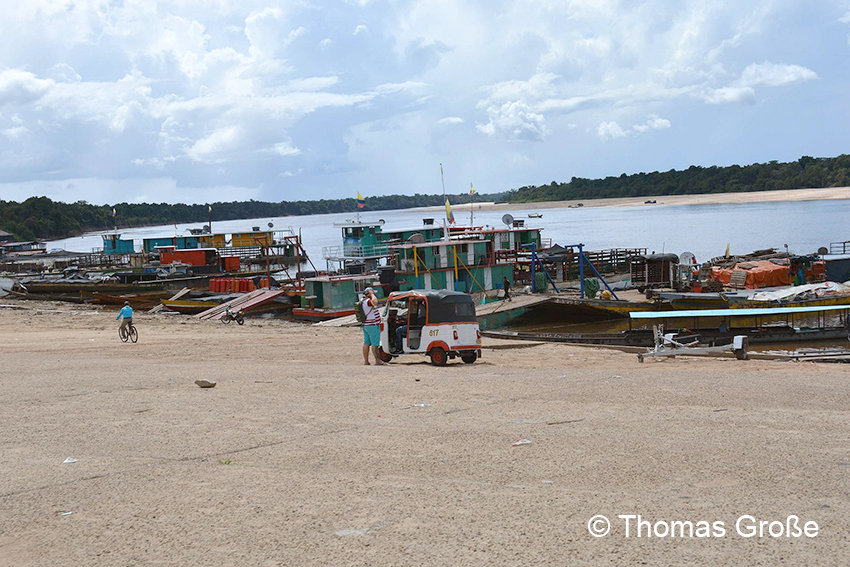
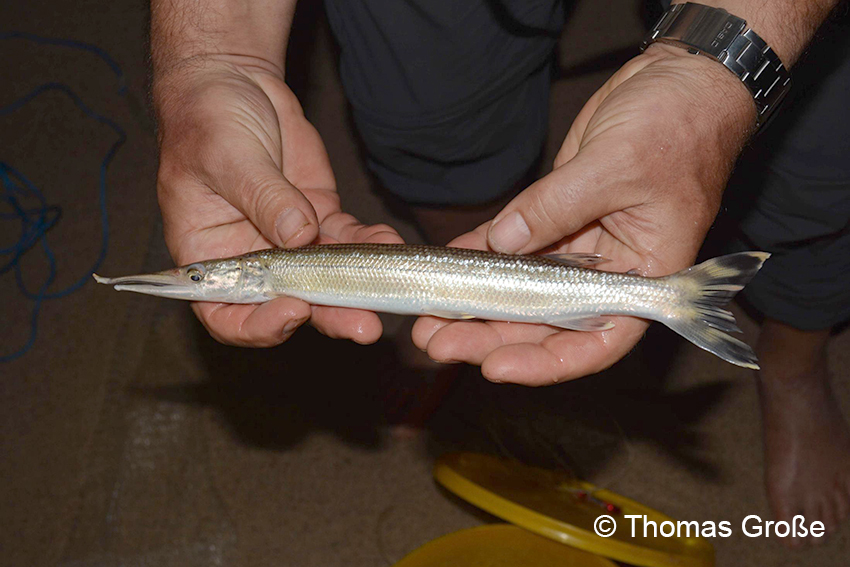
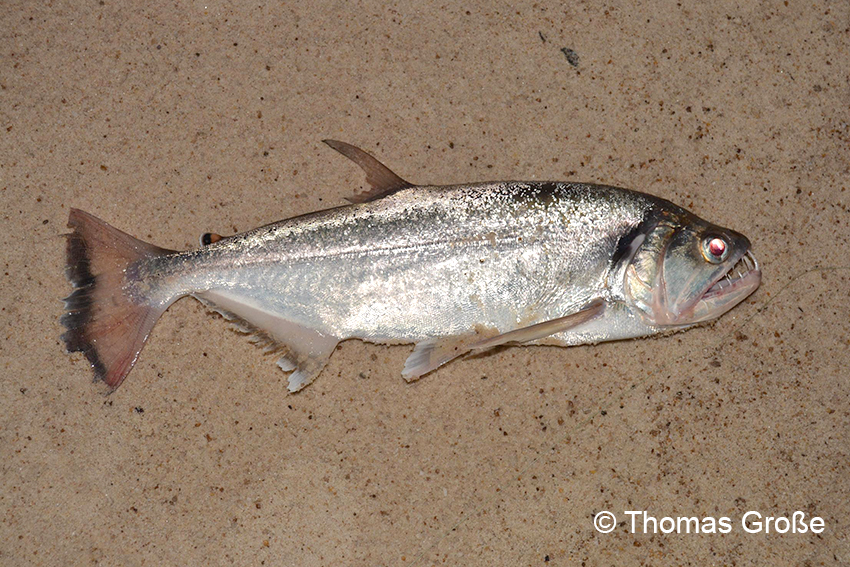
We used our stay at Caño Bocón to fish a smaller inflow, the Caño Jota in the estuary area. This small inflow had everything what one imagines from a small jungle creek, if …yes, if there were not an infinite number of small blackflies that could make the life hell. Since we arrived here in the early afternoon, we only had to dress up thick until sunset to avoid being completely bitten. During the night and the following morning we had the opportunity to look for fish without blackflies. Since such places with lots of blackflies are not really popular, we drove down the Caño Bocón again towards Rio Inirida around noon.
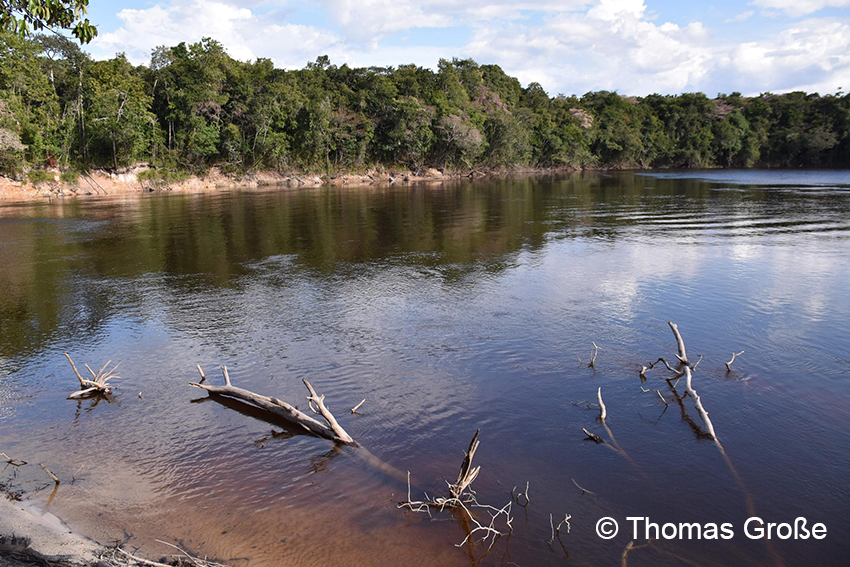
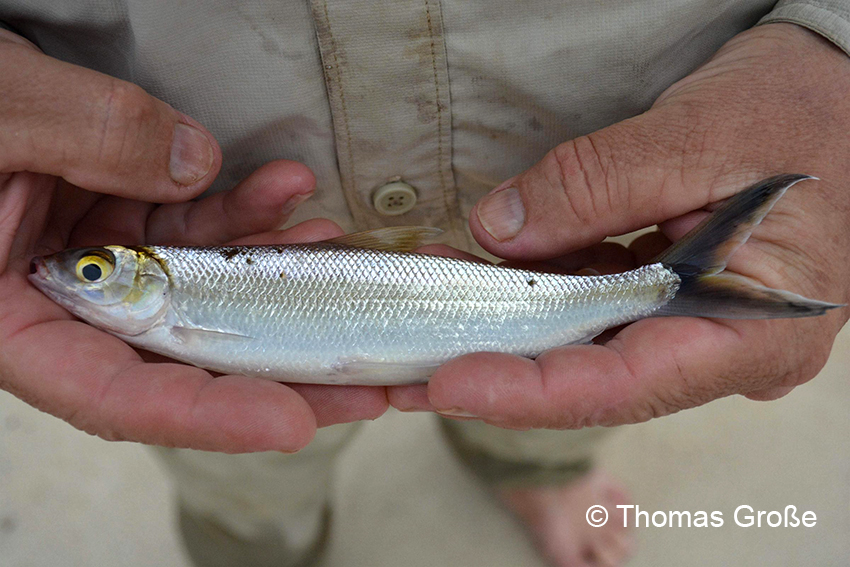
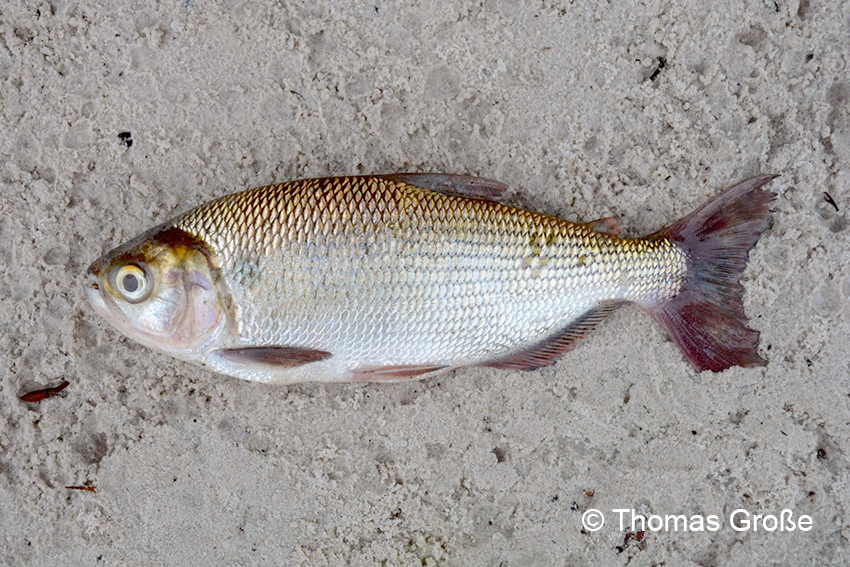
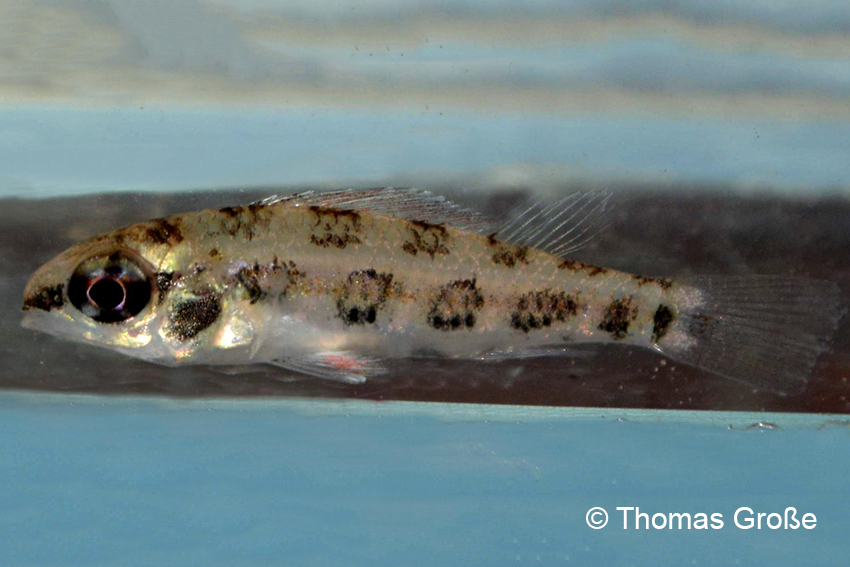
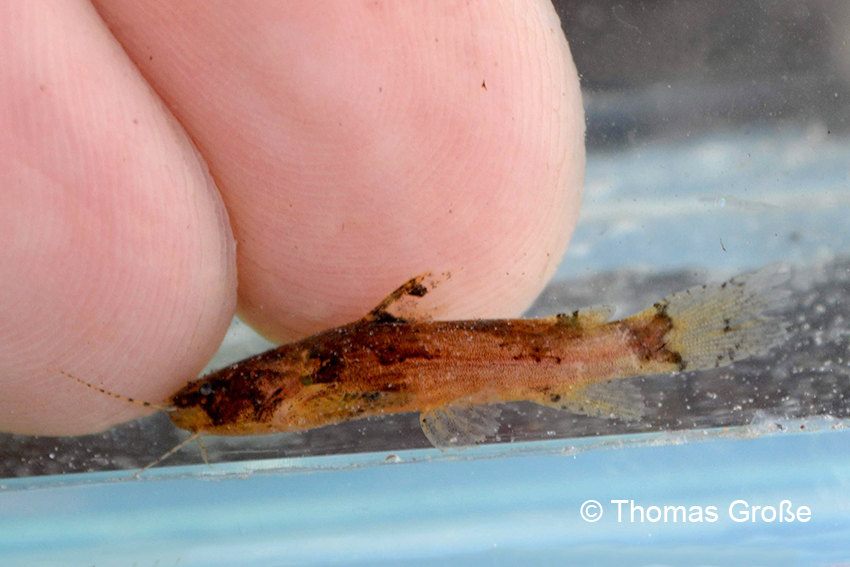
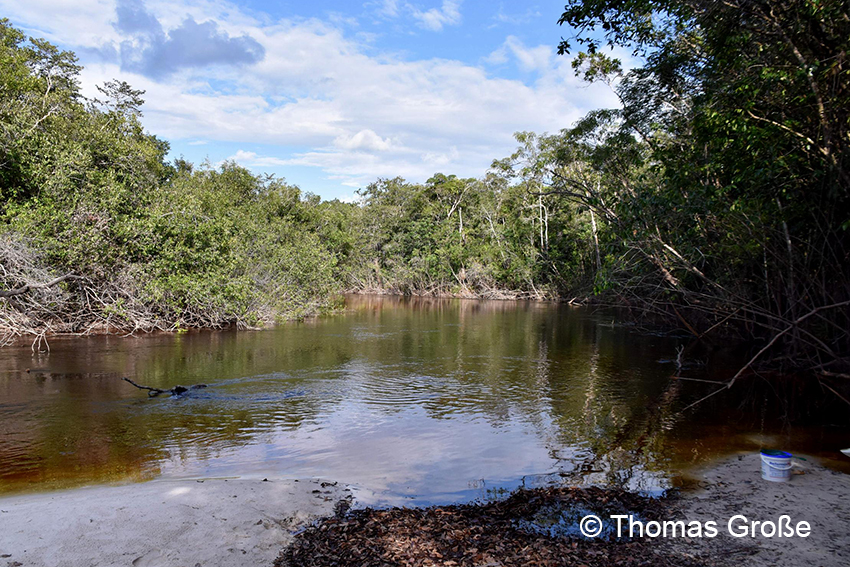
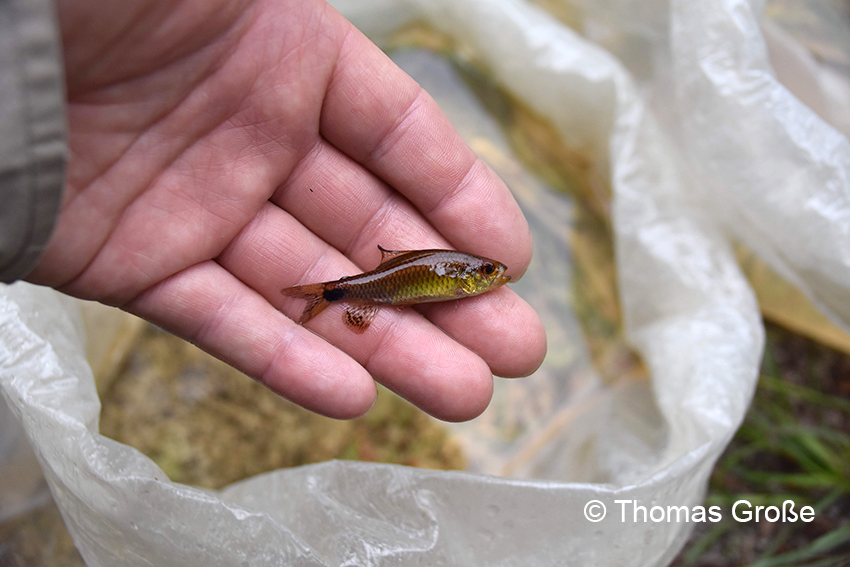
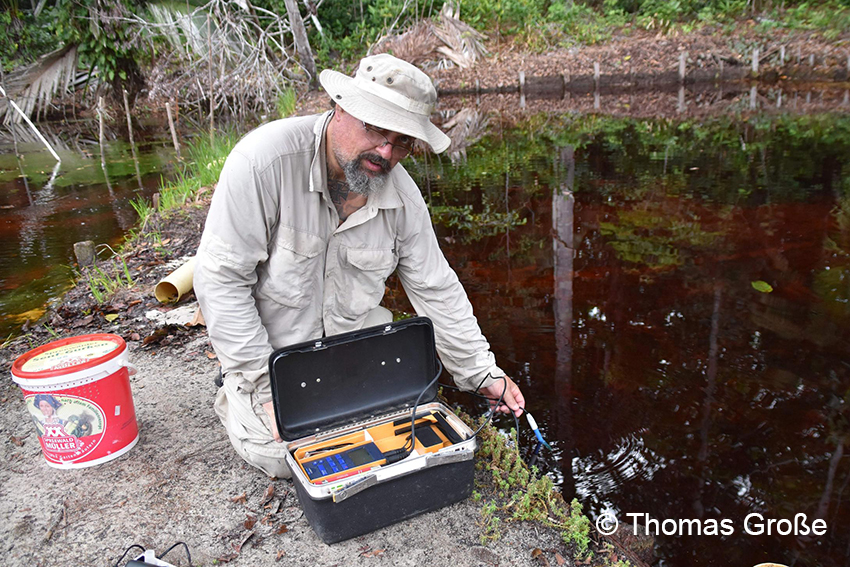
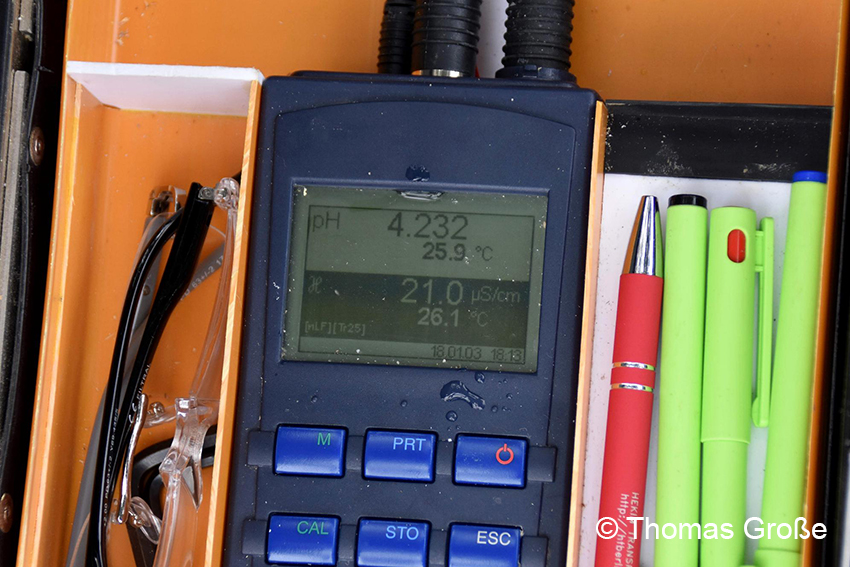
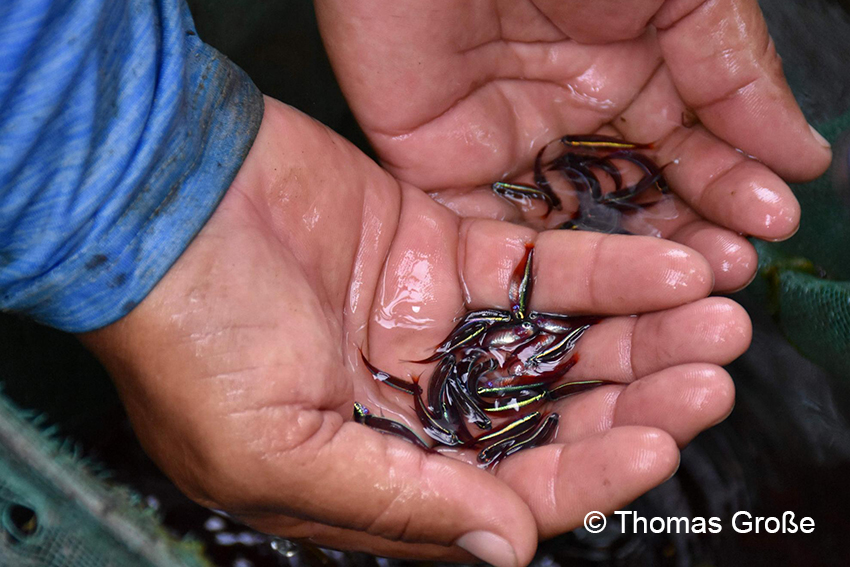
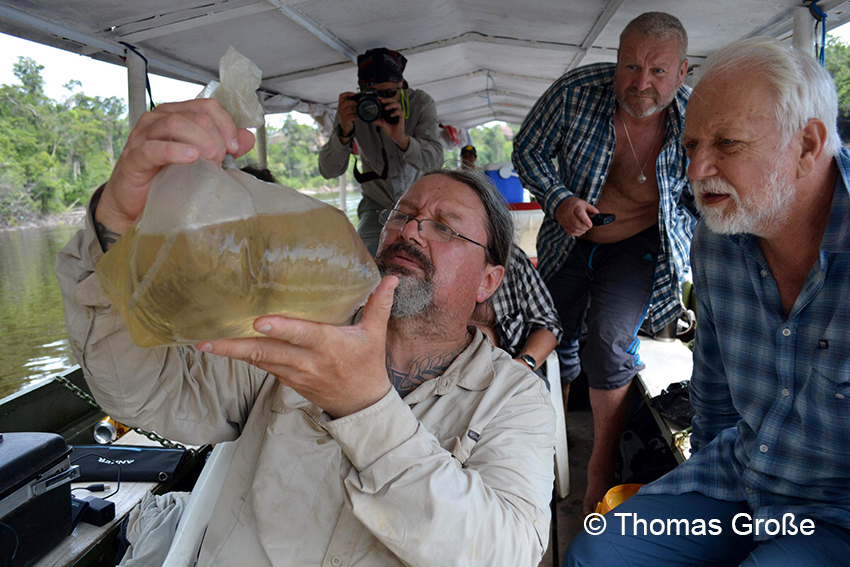
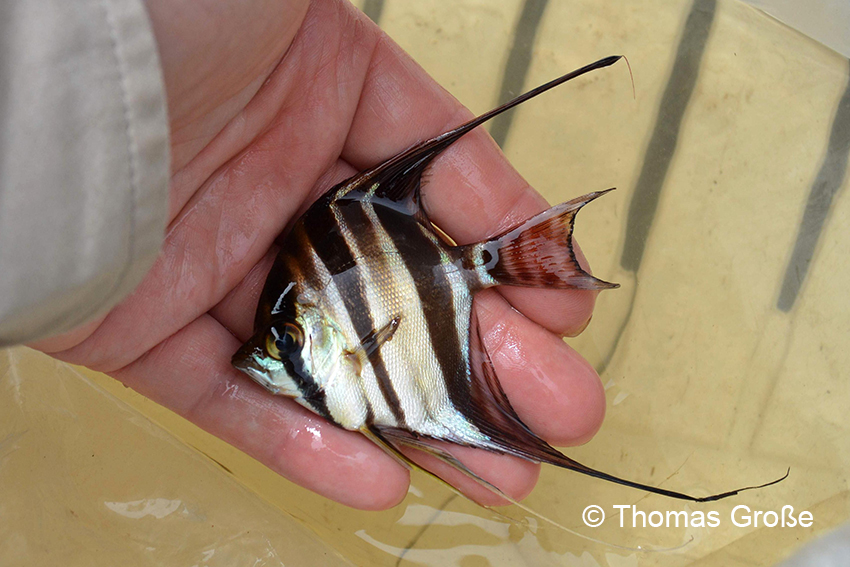
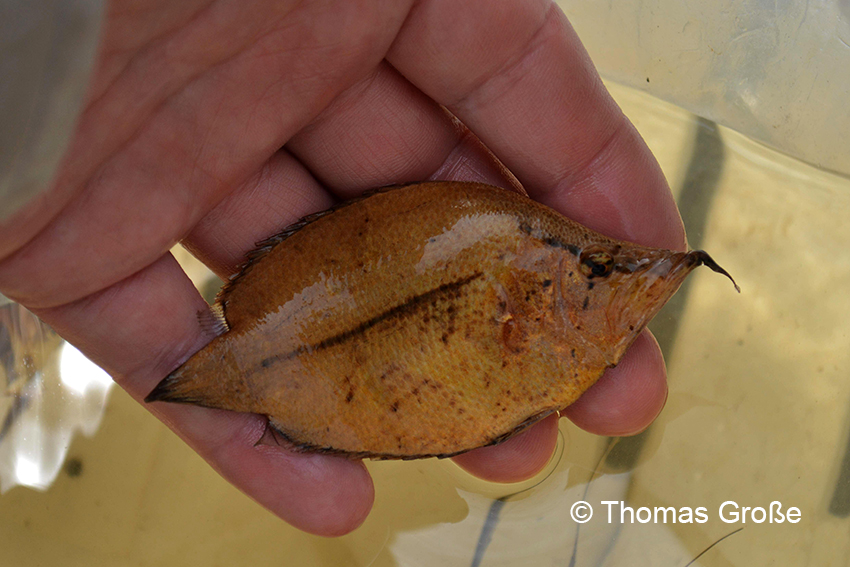
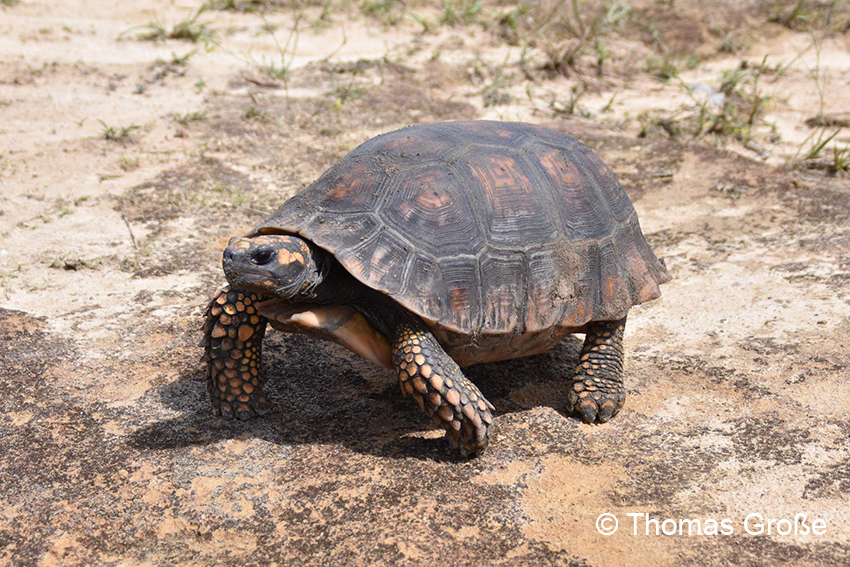
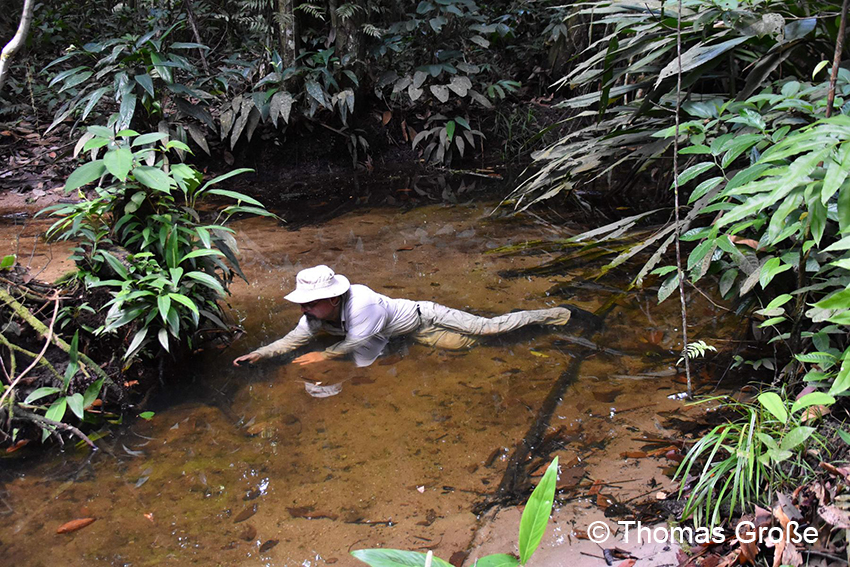
The following day we reached the Comunidad Remanso at the Rio Inirida, there are the last foothills of the Guyana Shield. Three round granite rocks, the Cerro Mavicure, Mono & Pajarito form a natural obstacle for the Rio Inirida, with a big rapids. Here it was also possible to stay for three days to explore the surrounding area. We circumnavigated the Cerro Pajarito in a day trip and in the evening we fell in our hammocks from the manifold impressions of the day. A little above the rapids there is a small black water inflow of the Caño San Joaquin, which turned out to be an interesting fishing water for us. On the way back to Puerto Inirida, we made a short stop to climb the Cerro Mavicure and enjoy a bird’s eye view of the breathtaking landscape of the Guyana Shield. In Puerto Inrida we visited the export station of Leonell and accommodated our self-caught fish there.
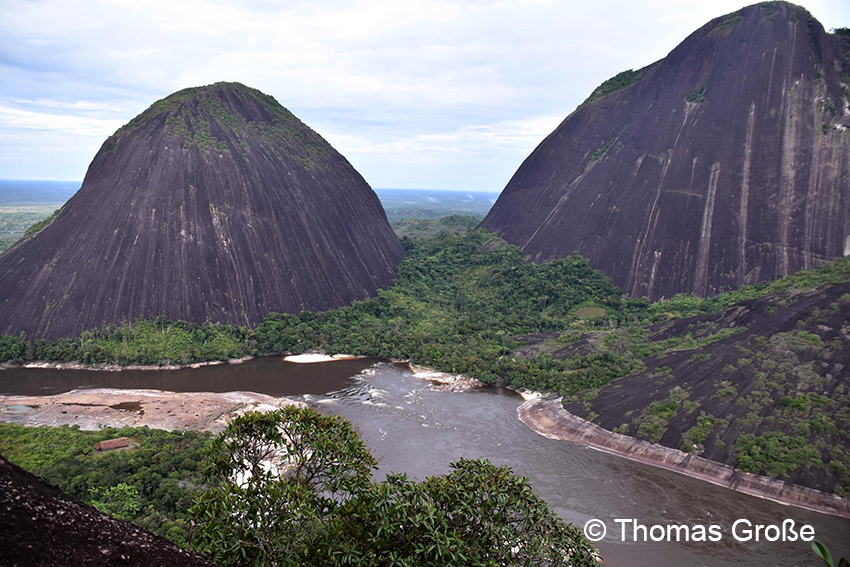
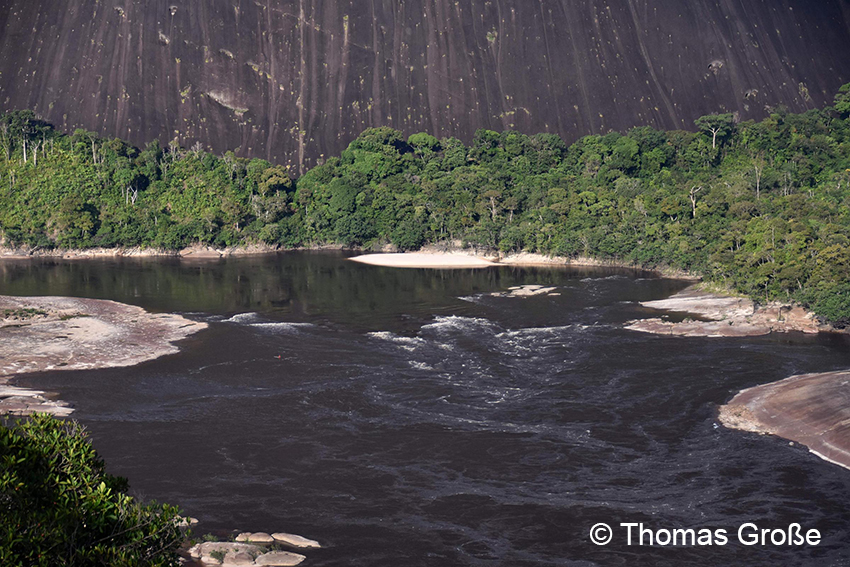
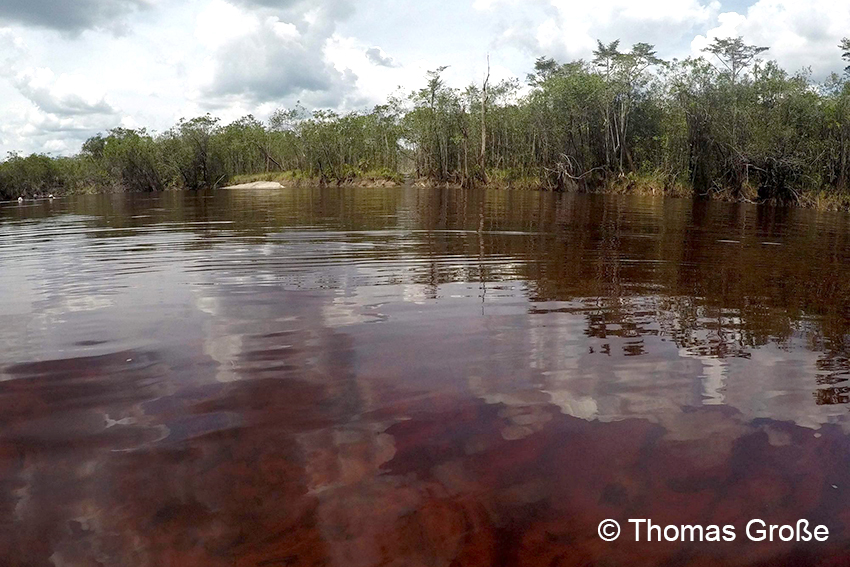
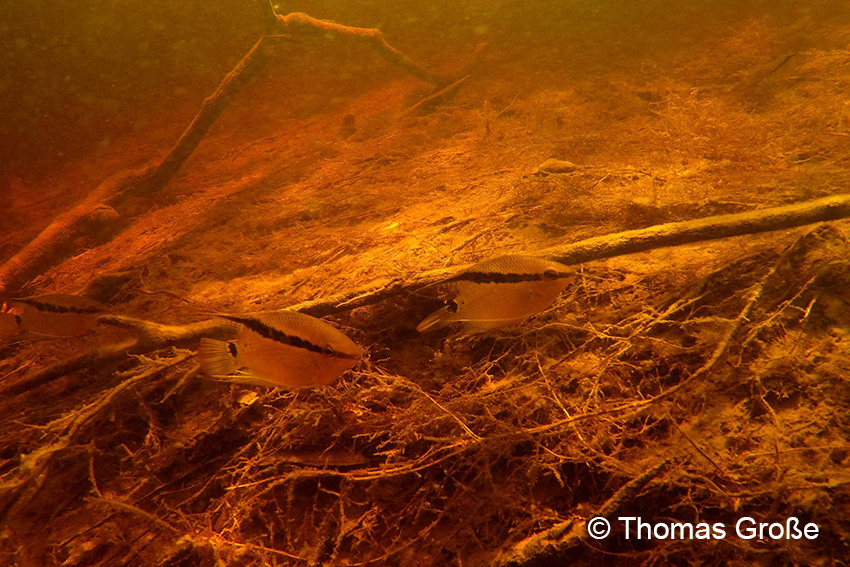
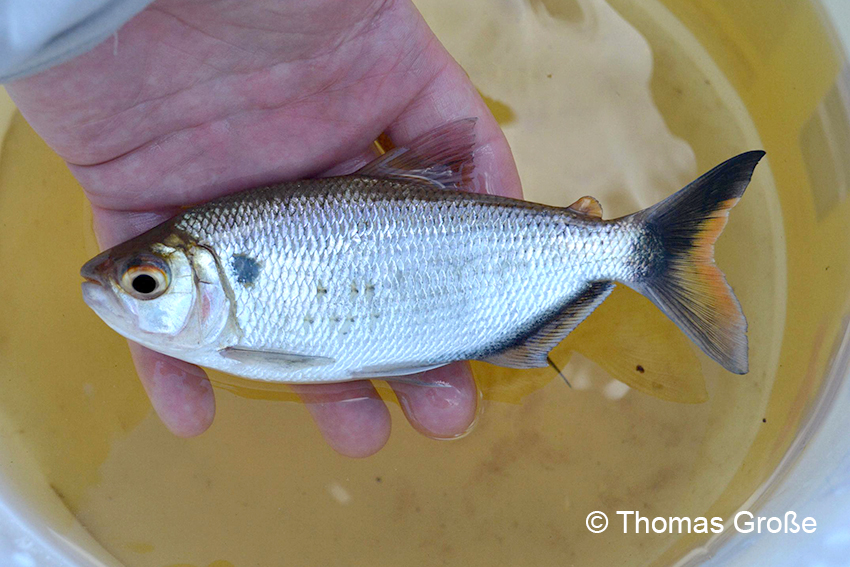
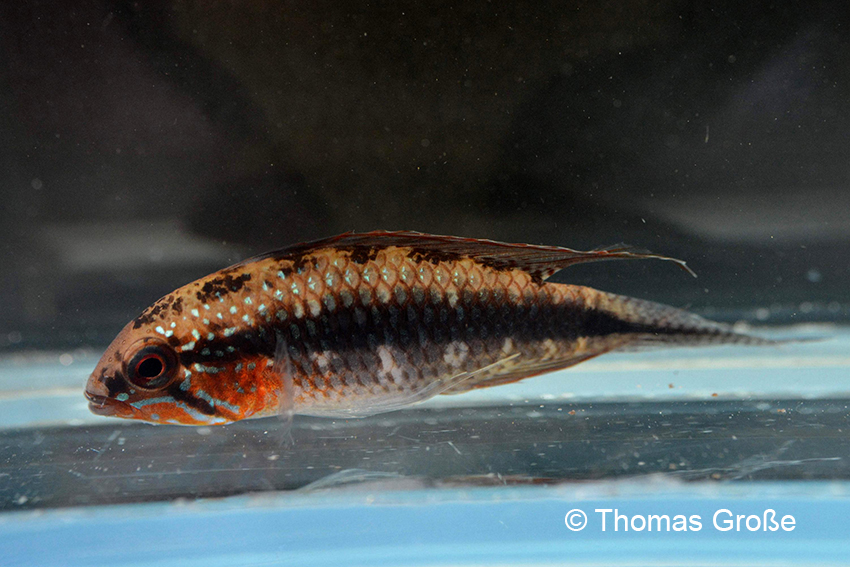
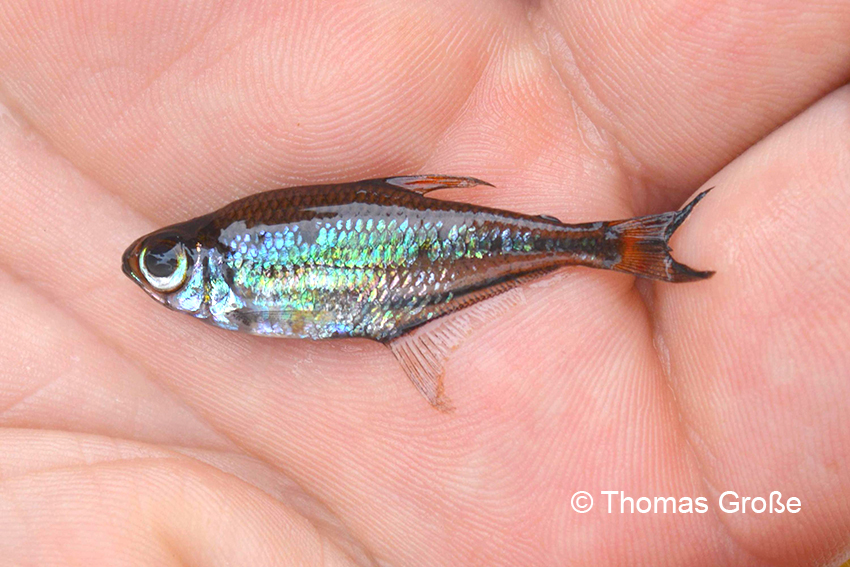
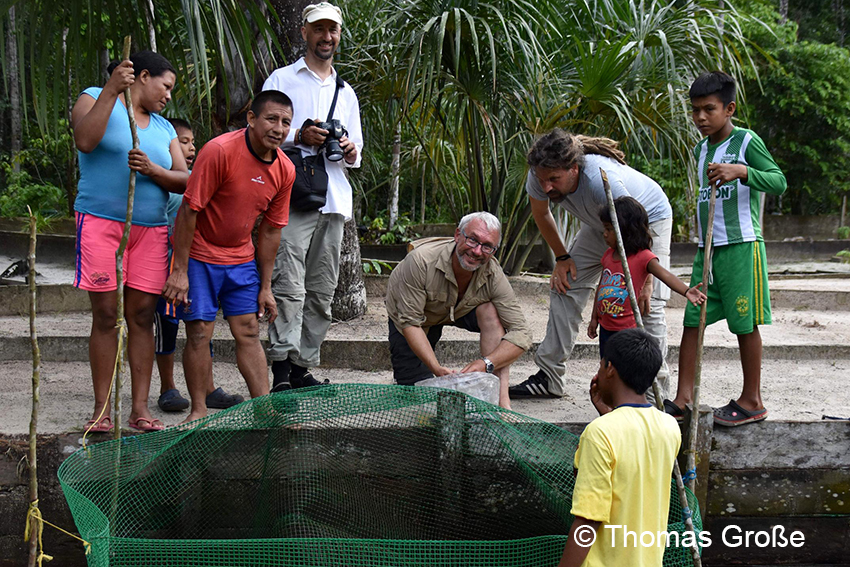
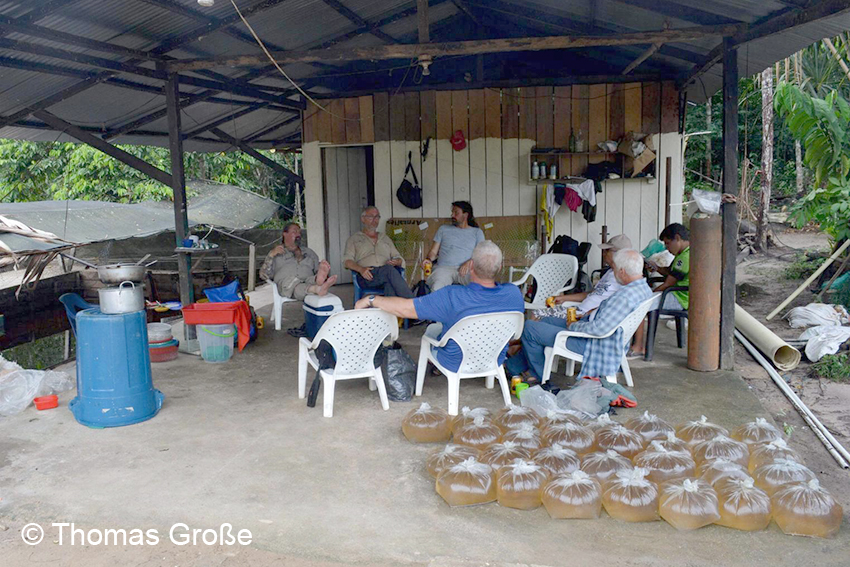
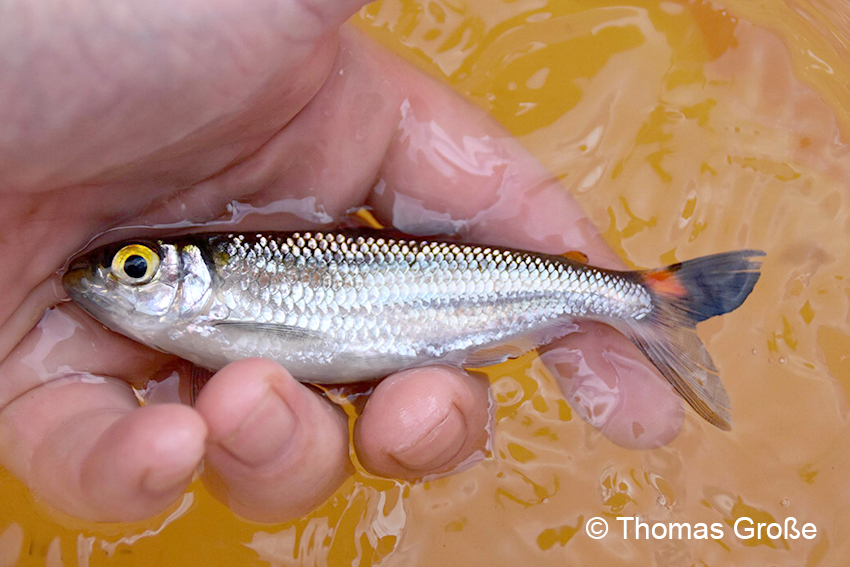
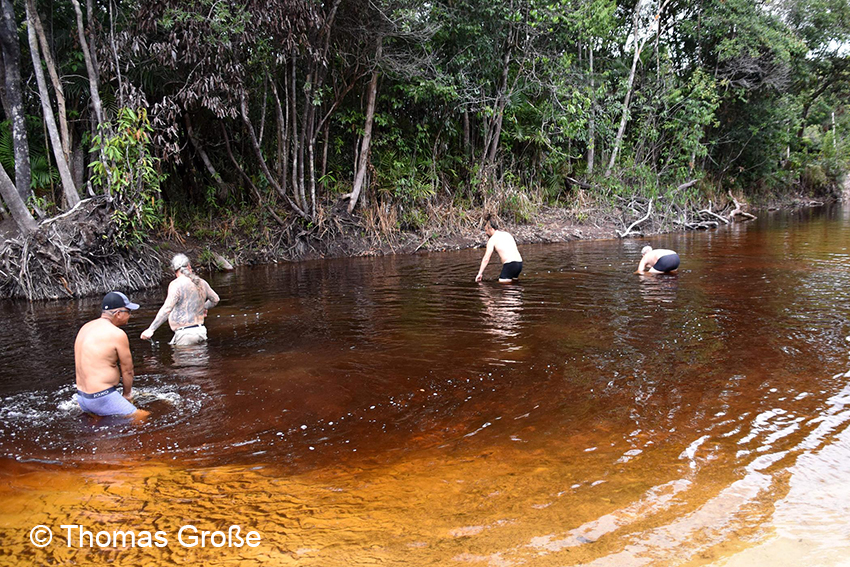
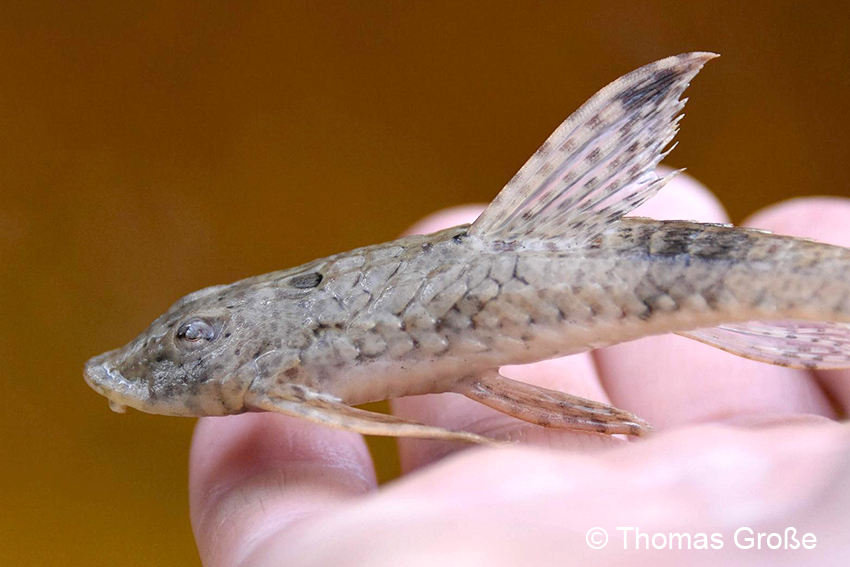
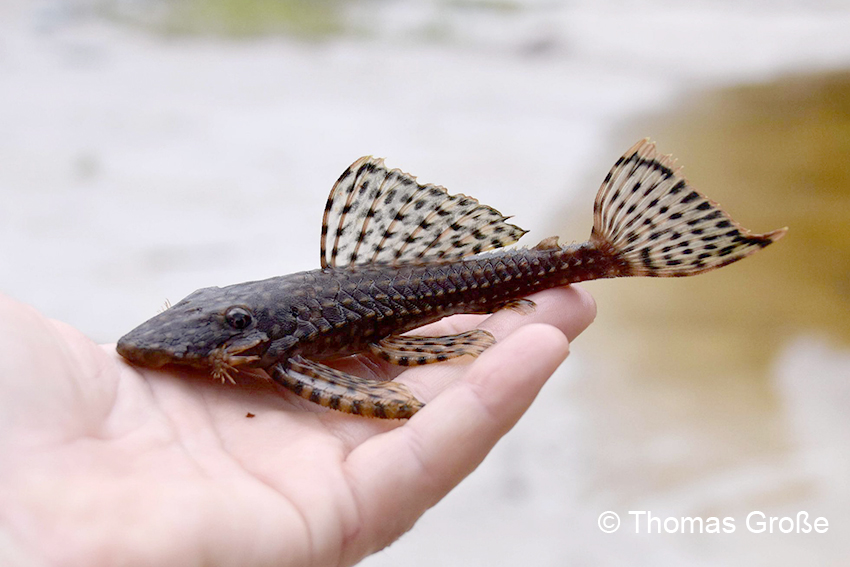
We took the opportunity to look for interesting fish in Leonell’s ponds, which we could have sent to Germany with the fish we caught ourselves.
The end of the really great fishing tour was at Caño Coco, which is a tributary of the Rio Atabapo and of course also hosts some of the species that are found there.
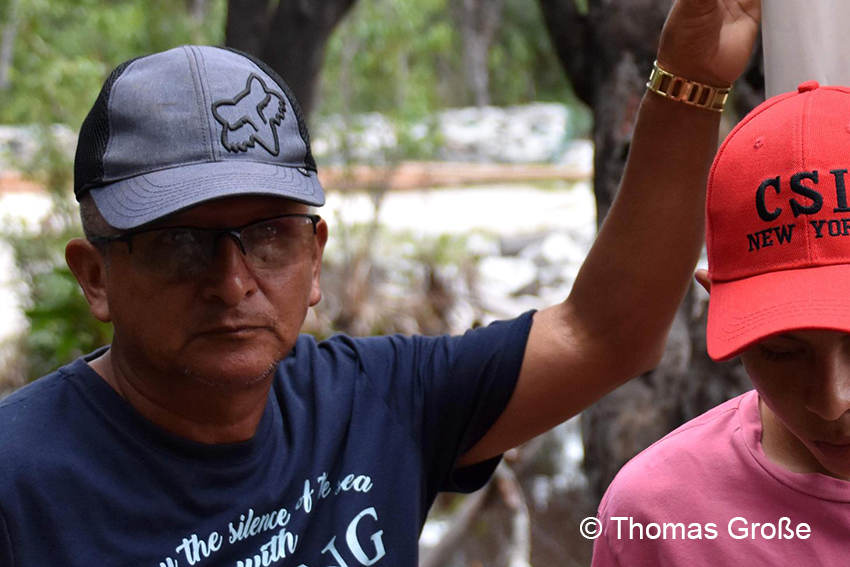
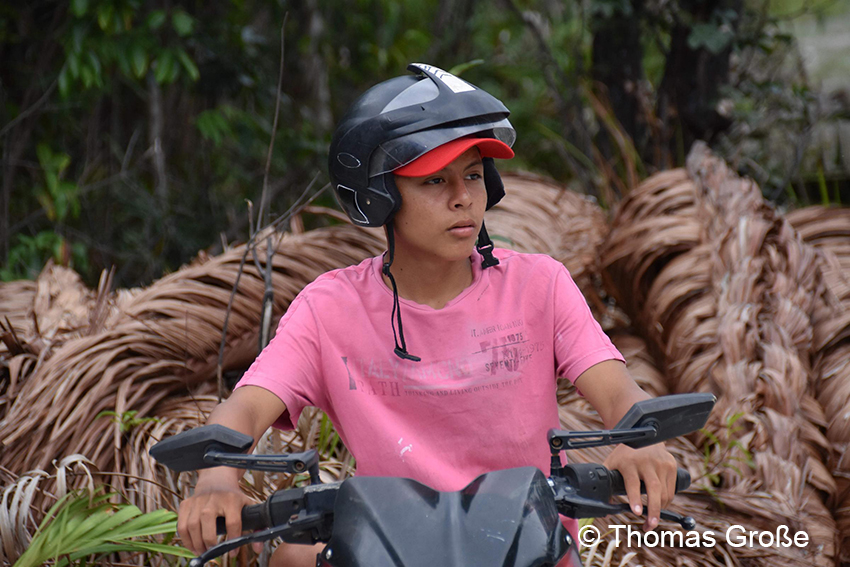
A big thank you to Aquarium Glaser, as well as to Leonell, his son Camillo and our Indian boatman Kortez, without whom this tour would not have been possible.
Text, pictures and film: Thomas Große
Part one of the story can be found here: https://www.aquariumglaser.de/en/fish-archives/colombia-a-journey-to-the-habitats-of-our-fishes/
Macrognathus zebrinus
All spiny eels of the currently 24 species of the genus Macrognathus are recommended aquarium fish. They remain relatively small (10-15 cm, only very rarely larger specimens are reported) by spiny eel standards and are peaceful to fish that are not suitable for food. In addition, most are still pretty colored.
Perhaps the prettiest is Macrognathus zebrinus from Burma. It inhabits the basins of big rivers Irrawaddy, Sittang and Salween. In addition, the species is also found in Nepal and allegedly also in Indonesia, but is imported from Burma or as bred ones. The largest specimen documented so far measured about 17 cm, but this is the exception. Our current imports with their length of 10-12 cm are already sexually differentiated, the females are clearly fuller and somewhat paler colored.
For the care of spiny eels, a substrate consisting at least in part of sand is important, because the animals like to burry themselves in. The feeding can be done with all kinds of frost and live food, as long as it is adapted to the body size of the fish. Acclimatized specimens also often accept granules. The aquarium for spiny eels must be covered absolutely escape-proof, and also the openings of filters must be secured against an intrusion of the fish, otherwise it can come to fatal accidents.
For our customers: the animals have code 425343 on our stocklist. Please note that we only supply wholesalers.
Guinea-import arrived!
Finally
we were able to organize an importation from Guinea once again! It
contains a number of varieties from the Pelvicachromis-humilis-complex
(Liberia Red, Dighiya, Sierra Leone, Falesade, P. signatus), the rare P.
roloffi, beautiful Hemichromis (H. cristatus, H. letourneauxi, H. sp.
Guinea II), some rare species of Polypterus (P. ansorgii, P.
buettikoferi, P. palmas), and dwarf fishes: the lampeye Aplocheilichthys
normani, the charming Pseudepiplatys annulatus, and the dwarf tetras
Lepidarchus adonis and Ladigesia roloffi.
And here, as first appetizers, the dwarf tetras:
Ladigesia roloffi


This
beautiful tetra becomes only 3-4 cm long. Nevertheless it should be
kept in comparatively large aquaria, for it loves to swim a lot. The
males can be easily recognized by the shape of the anal fin. The sense
of that structure is not researched yet. The species is very peaceful. A
dark gravel is the best choice for a tank for Ladigesia, because the
unusual orange coloration of the fins is shown most intensively by
specimens kept over dark bottom.


Lepidarchus adonis

The
Adonis tetra also becomes only 3 cm long. However, it has a completely
different temper, compared with its orange-finned cousin: Adonis tetras
are very quiet fish that love dense plantation and lots of hiding
places. Small tanks are much better suited for keeping them than large
tanks, because in the latter they simply get lost. Males and females
differ significantly by coloration and the finnage. One keeps this
little jewels best in company of their own kind or maybe along with
Pseudepiplatys annulatus or other, really peaceful dwarf species.

For
our customers: Ladigesia roloffi has code 144003, Lepidarchus adonis
code 145302 on our stocklist. Please note that we exclusively supply the
wholesale trade.
Text & photos: Frank Schäfer
Congo-importation arrived!
Once
more we were able to organize a wonderful, large importation from the
Congo. Our proofed supplier sent us among others beautiful butterfly
barbs (Barbus hulstaerti, http://www.aquariumglaser.de/en/fish-archive/barbs-asboras-danios-en/Barbus_hulstaerti_Lompole_en/), large Upside-Down-Cats (Synodontis nigriventris, http://www.aquariumglaser.de/en/news/Synodontis_nigriventris_finally_available_again__en/), also the “Zebra-nigriventris” (http://www.aquariumglaser.de/en/fish-archive/catfish-en/mochokidae-en/Synodontis_sp_aff_nigriventris_ZEBRA_en/), gorgeous Orange Bushfish (Microctenopoma ansorgii, http://www.aquariumglaser.de/en/fish-archive/labyrinthfish-en/Microctenopoma_ansorgii_en/, http://www.aquariumglaser.de/en/fish-archive/labyrinthfish-en/Microctenopoma_ansorgii_en/), healthy Hydrocynus goliath (http://www.aquariumglaser.de/en/fish-archive/tetras-en/predatory-tetras-en/Hydrocynus_goliath_en/), the beautiful and rare Congo-Barb (Clypeobarbus congicus, http://www.aquariumglaser.de/en/news/Clypeobarbus_congicus_en/), banded bushfish (Microctenopoma fasciolatum, http://www.aquariumglaser.de/en/fish-archive/labyrinthfish-en/Microctenopoma_fasciolatum_en/), and so on, and so on…







One
of the most beautiful fish of the World, the six-striped Distichodus
(Distichodus sexfasciatus) is also represented by a good number of
specimens. We have no doubts that this species would be among the most
wanted aquarium fish at all, were there not some characters that make
the animals suitable only for the very long-suffering and extremly
patient hobbyist: they grow (even in smaller tanks) to a length of more
than 30 cm, are extremely quarrelsome and will – for sure! – eat any
plant in the aquarium.

Usually
this species has six stripes on the flanks. In our current shipment are
also several specimens with other numbers of bars, most often seven.
But do not think that these fish would represent other species; most
often seven bars occur only on one side of the body while the other one
has a regular number of stripes.

Seven
is a lucky number: in any case it brought luck for our Congo
importation, for all fish are healthy, stable and feel very well in
their new environment!

For
our customers: D. sexfasciatus has code 128001 (3-5 cm) and 128002 (5-7
cm) on our stocklist. Please note that we exclusively supply the
wholesale trade.

Text & photos: Frank Schäfer
Finally: an import from Guinea!
The political situation in Guinea is not stable at all. So it is very difficult to organize an importation from there. But now we were successful once more and we proudly present to you some of the ornamental fish species from Guinea:
Aplocheilichthys normani


A single specimen of that lampeye is a quite drab creature, but a larger school of them in a tank with dimmed light is like magic! The blue eyes drift like small fireflies through the underwater world – wonderful!
Code 302392 on our stocklist
Pseudepiplatys annulatus



The Clown killi is one of the smallest species of killifish at all and a perfect fish for so-called nano tanks.
Code 322002 on our stocklist
Polypterus ansorgii


Opposite attracts. Some hobbyists like small fish, some other one like large fish. A species for the latter group is the very rare Polypterus ansorgii, which we have obtained in specimens of 35-60 cm length.
Code 162407, 162408, and 162409 on our stocklist
Pelvicachromis rubrolabiatus Dinkinya



In this pretty cichlid the females are even more attractive than the males. The fish were also a containment of the present import from Guinea. Male become around 10 cm long, females stay smaller.
Code 559533 on our stocklist.
Text & photos: Frank Schäfer
New names – well known fishes – much confusion

Two of the most often traded algae eaters have been re-named some time ago, namely the Stone Lapper and the Flying Fox. The Stone Lapper has been called Garra taeniata for a long time, but this name is a synonym to the elder name Garra cambodgiensis, which is valid.This species has been confused very often with the Flying Fox (for example in the very popular Aquarium Atlas). The Flying Fox was called Epalzeorhynchus (or Crossocheilus) siamensis. This name also proofed to be a junior synonym of the elder – and thus valid – name Crossocheilus oblongus.
Both species can be easily told apart:



Stone Lapper (Garra cambodgiensis)
– black stripe does not extent to caudal fin (tail fin)
– dorsal fin (the fin on the back): painted with three zones
– no barbels on nose, but only barbels in the corner of the mouth
– no small black dot in front of dorsal fin on the back



Flying Fox (Crossocheilus oblongus)
– black stripe extends in the caudal fin
– no colour at all in dorsal fin
– one pair of barbels on the nose, another pair of barbels in the corner of the mouth
– always a small black dot in front of dorsal fin on the back
Both species are excellent algae eaters and should be best kept in schools. In Garra cambodgiensis males and females can be told apart by the shape of the head, in Crossocheilus oblongus females can be recognized by the plumper body only.
For our customers: Garra cambodgiensis has code 416302 on our stocklist, Crossocheilus oblongus code 15502. Please note that we exclusively supply the wholesale trade.
Text & photos: Frank Schäfer
Showfish arrived!


We received 3 specimens of very nice Lepisosteus oculatus and also 3 specimens of pretty Polypterus ornatipinnis. Both have sizes of 40-50 cm, so they make ideal show fish!


For our customers: the animals have code 164007 (P. ornatipinnis) and 848019 (L. oculatus) on our stocklist. Please note that we exclusively supply the wholesale trade.
Text & photos: Frank Schäfer
Yesterday we received a shipment with absolute top-rarities:
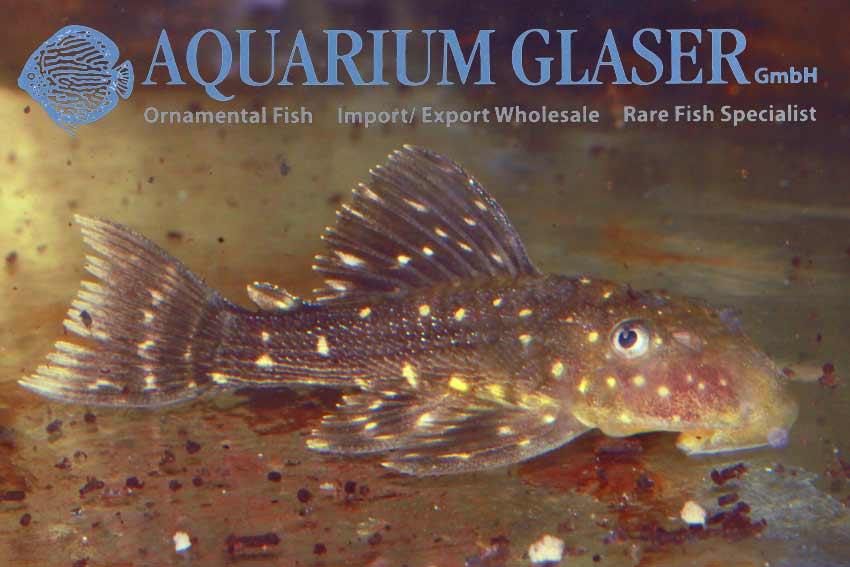
262621 Hypostomus luteus, BRED, 3-4 cm

636576 Cichla piquiti, BRED, 14-18 cm

636336 Cichla kelberi, BRED, 18-22 cm

636395 Cichla melaniae, BRED, 12-15 cm

148353 Megalops cyprinoides, 12-15 cm
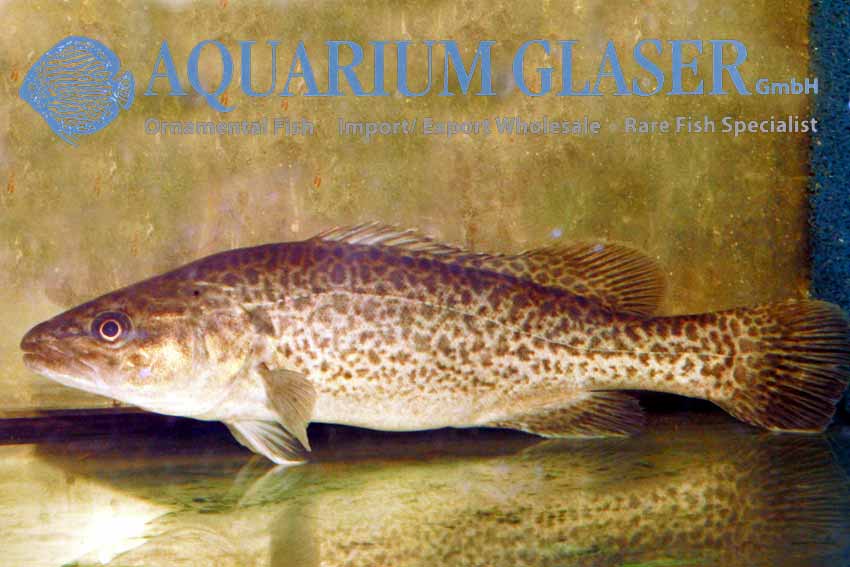
426095 Maccullochella peelii, 15-20 cm

414903 Elopichthys bambusa, 8-10 cm

455893 Spinibarbus denticulatus, 10-12 cm
All species are available in limited numbers only!
Please note that we exclusively supply the wholesale trade.
New in stock
Dear customers,
our weekly importatios regularly content species and varieties we never or only very occassionally had in stock. Thus they are – at least for us – new. Sadly it is for different reasons not possible to portray all of them in detail. However, we want to show you at least some of the most interesting of them by a photograph. Enjoy!
Your Aquarium Glaser Team

Aqualog Calendar-Yearbook 2008
 Just in time for the new year, the “Aqualog Calendar-Yearbook 2008” is out now.
Just in time for the new year, the “Aqualog Calendar-Yearbook 2008” is out now.
350 top quality colour photos, published for the first time.
600 details of conferences and exhibitions worldwide.
500 zoos, public aquaria, and nature parks worldwide.
500 aquarium and terrarium associations worldwide.
500 European veterinary practices for fishes and terrarium animals. Maps of rivers and lakes in Africa, Asia, South America, etc. Worldwide national customs codes, holiday dates, places to visit,and lots of other useful tips and information. This valuable work is the ideal present for any aquarium or terrarium enthusiast, for any occasion. To place your order just click HERE!
Finally we are done!
We made it:
Our new homepage is ready!
Herewith we would like to warmly welcome ALL hobbyists dedicated to ornamental fish on our newly designed website!
After weeks of thinking, many different possibilities and changes – optically and in content – we did it: Our new homepage is ready…with many news and improvements. We especially thank the company Aspiria Informationstechnologie in Hanau, Germany, which realized our wishes 100%!
With the new layout we succeeded to create our page more functional and more user-friendly. New features such as “Fish of the week” on the first page, the login for stocklist download for our wholesale customers as well as the Newsletter make our website (hopefully) even more interesting for you!
And here our tip for all, who cannot buy the fish of their dreams directly from us: Simply click the pdf-symbol below the fish description, print it and ask your retailer or wholesaler for your favourite fish!
We hope that you will like our page and we would be glad about your regular visits!





